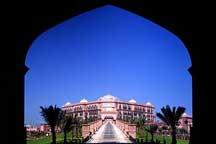Tibet Autonomous Region
2009-09-07 12:58 BJTSpecial Report: 60th Anniversary of PRC |
Watch Video

 Play Video
Play Video
The Tibet Autonomous Region, which lies an average of more than four-thousand meters above sea level, forms the main part of the Qinghai-Tibet Plateau. It's well known as the "roof of the world".
Covering 1.22-million-square-kilometers, the region accounts for 12.8 percent of China's total land area. Tibet adjoins Xijiang Uygur Autonomous Region and the province of Qinghai in the north, Sichuan in the east, Yunnan in the southeast. It also borders countries and regions such as Myanmar, India, Bhutan and Nepal in the south and west along a border of nearly four-thousand kilometers.
As of July 2009, Tibet has a total population of 2.87 million. Over 92 percent of them are Tibetans. Other ethnic groups in the region include Lhoba, Moinha, Han and Hui. The main religion of the region is Tibetan Buddhism.
Tibet was peacefully liberated in 1951. The Autonomous Region was established on September 1st, 1965. The capital of the region is Lhasa.
Tibet is rich in natural resources including minerals, energy, plants and animals. Its unique cultural and natural heritage have also helped the region's tourism industry to develop rapidly. The capital, Lhasa, boasts the famous Potala Palace, and many traditional temples and monasteries which are key cultural relics under state-level protection. Other parts of the region has wide spans of mountains, lakes and wetlands - all of which are tourism paradise.
In recent years, the communication between Tibet and China's hinterland area has greatly strengthened, thanks to the Qinghai-Tibet Railway. The 1,956-kilometer railway link begins in Xining, the capital of Qinghai Province, and goes to Lhasa. After confronting a range of challenges, including the perennial frozen ground, severe cold, a lack of oxygen and the protection of fragile ecology, the railway officially began its operation in 2006. It is a symbolic project in China's West Development Strategy and will play a significant role in accelerating the social and economic development of Tibet.
Editor: Liu Anqi | Source: CCTV.com
 Mail
Mail Share
Share Print
Print


 Video
Video









 2009 China Central Television. All Rights Reserved
2009 China Central Television. All Rights Reserved